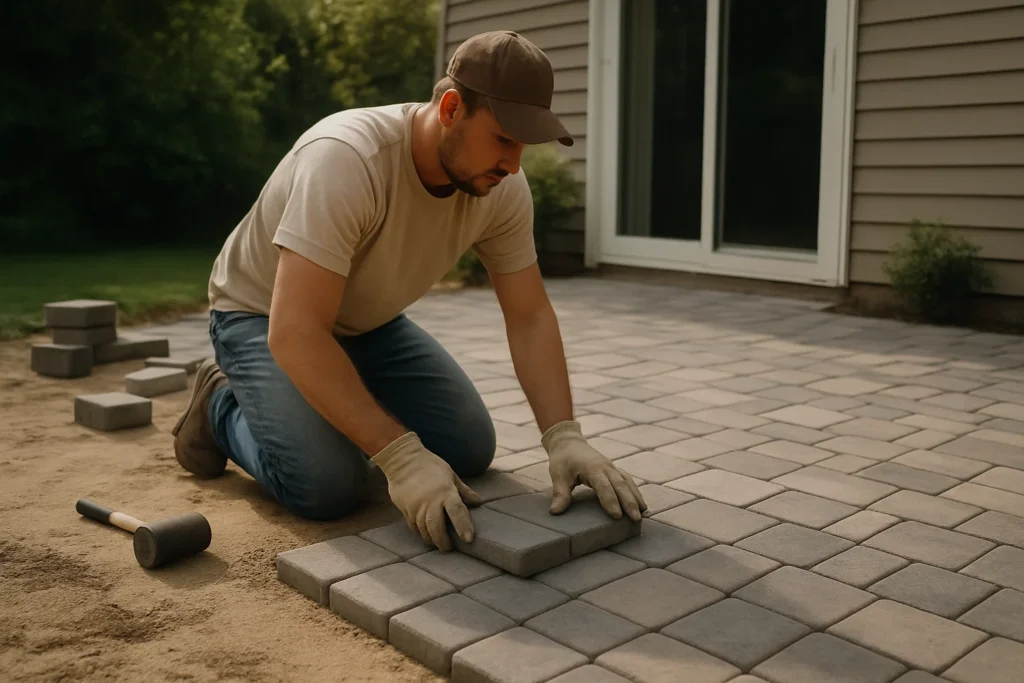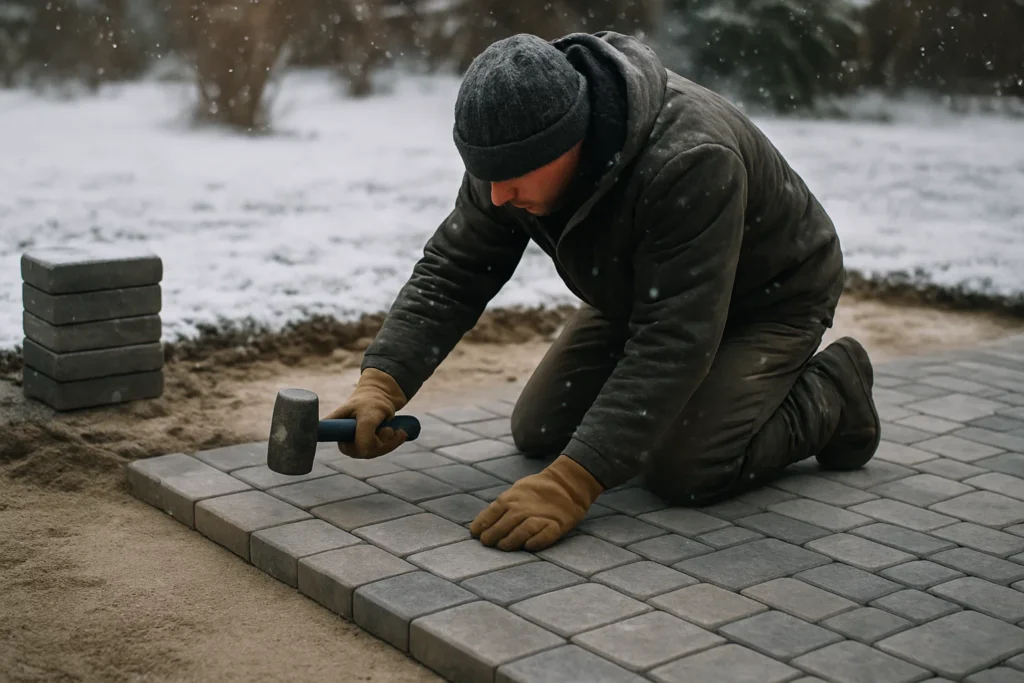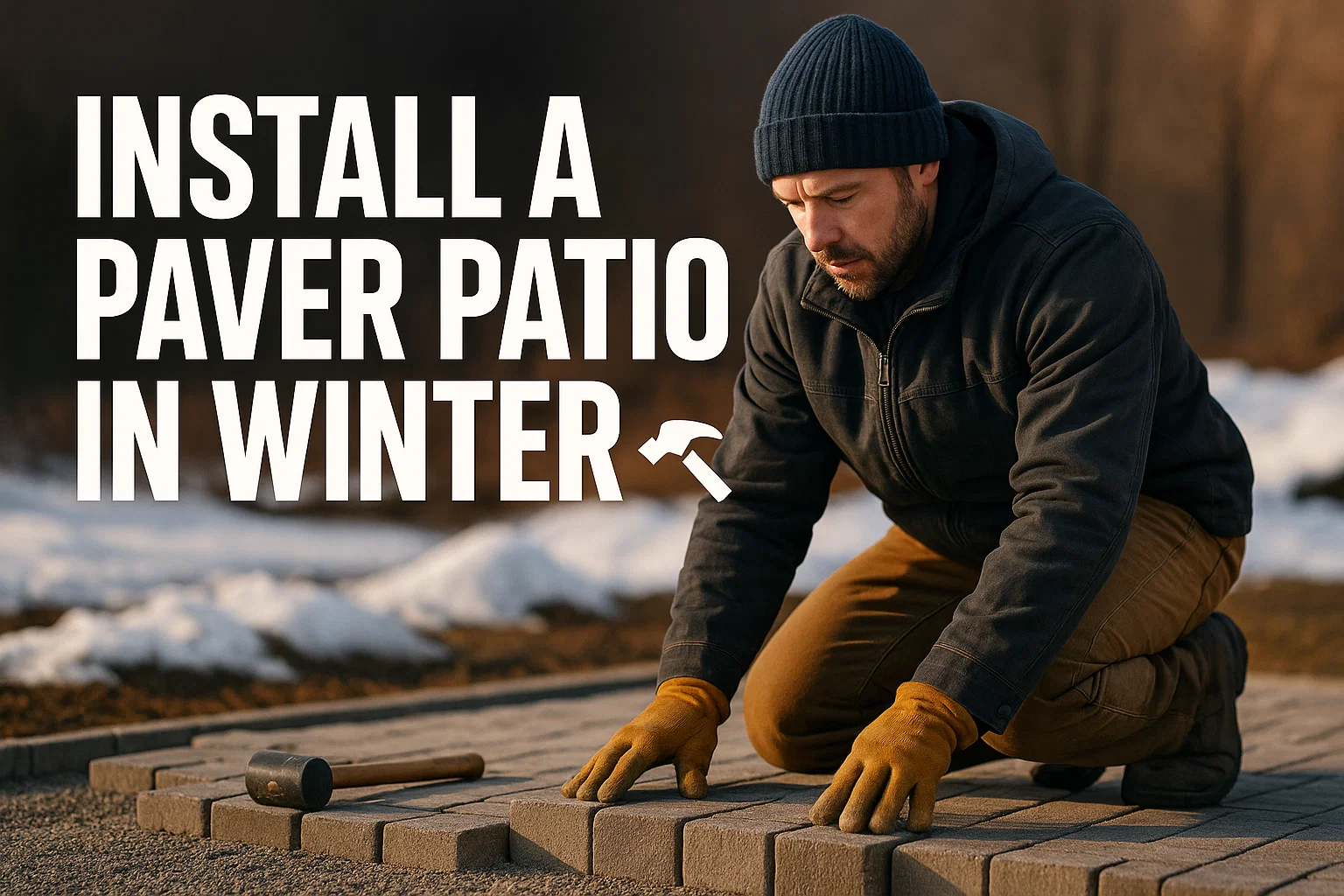When the majority of people consider installing a paver patio, they consider warmer months such as spring or summer. However, winter is a wonderful season to accomplish this project but with proper planning. Properly prepared and with skilled contractors, installation of patio winter paving can be without any hassle. The one question that is usually raised by the homeowner is: How long does it take to install a patio made of pavers when it is cold outside? Generally, an average-sized paver patio winter installation requires 3 to 7 days. This guide will give you an idea of the average installation time needed during winter, what influences the project and how your patio project will be completed successfully and quickly even in the colder season.
Best Time to Install a Paver Patio
The ideal season to lay a patio pavement is usually during spring or summer. These warmer days are offering steady, dry weather, which is easier and more effective in excavation, leveling and compaction of the base. You can use your patio all year round, right away, without having to wait till the cold weather is over with spring installation.
Why Spring and Summer are Ideal:
- Stable ground: Once the winter frost thaws, the ground is compacted and dry and the chances of movement or cracking are minimized.
- Good weather: Days are longer, rain is less and the weather is milder, which results in fewer weather-related delays.
- Quick Use: Patio is available in warm seasons when outdoor living is most favored.
- Easy Scheduling: There is increased availability of contractors and materials, and projects can be completed on time.
During winter installation is possible but it needs more planning and can take more time because of frozen ground or weather disruptions.
Factors That Influence Installation Time in Winter
Depending on a number of factors, installation of a paver patio in winter may require a long time or a short time. The following are the main factors that influence the amount of time the project would require during colder months:
1. Ground Conditions
When the ground is either frozen or extremely wet due to snow or rain, ground excavation and the base layer preparation are more challenging and time consuming. Light winter conditions with arid, workable soil accelerate installation.

2. Dimensions and Difficulty of the Patio.
The bigger the patio or design and its complex patterns and edges, the more time it will take to complete. Rectangular patios are normally simple and take less time.
3. Temperature and Weather
Freezing temperatures constantly may retard progress since certain jobs cannot be performed without rest to avoid problems such as the shift of bases. Delays and safety issues are also caused by snow or icy weather.
4. Base Preparation
The gravel and sand foundation should be compacted in place correctly so that the patio will last. During winter base preparations are very essential and could extend longer periods to allow materials to settle easily.
5. Installation Crew experience.
Experienced employees who are used to working during winter can finish the task in less time and overcome the difficulties more effectively.
6. Material Availability
In some cases, materials are more readily available during winter making it quicker to commence the project. Conversely, there can also be supply delays.
7. Scheduling and Permits
Contractors tend to be less occupied during the winter; this is why scheduling is faster. But allowing processes may slow things down according to local regulations.
Hiring Professionals vs. DIY: Winter Installation Considerations
The process of installing a paver patio during winter has special issues that influence the decision to employ the workforce or undertake a DIY initiative.
Hiring Professionals
The winter installations need expertise in dealing with frozen soils, draining, and cold damage of materials using the appropriate tools and methods.
DIY Installation
Where DIY can be cost effective, winter projects complicate matters. Wet or frozen ground is more difficult to excavate and level and inappropriate base preparation during cold weather can result in displacement or cracking in the future.
| Aspect | Hiring Professionals | DIY Installation |
| Experience | Skilled with winter conditions | Less experience, learning curve |
| Tools | Have specialized equipment | May lack needed tools |
| Time | Faster, efficient | Slower, takes more time |
| Weather Handling | Manage delays and cold safely | Hard to manage weather issues |
| Quality | High, fewer mistakes | Higher chance of errors |
| Cost | Higher upfront cost | Lower labor cost but risks |
| Permits | Handle permits | Homeowner responsible |
| Stress | Professional management | More effort and stress |
Is it possible to install a Paving Patio in Winter?
Yes, one can install a paver patio in winter. Paver patios are constructed of separate stones, as opposed to concrete, flagstone, or gravel patios, which depend on a process of curing when they are used in warm climates. This is because of the dry-lay installation, and this base to the pavers renders them less sensitive to cold weather, enabling them to be installed even when cold weather comes along.

However, very cold or frozen ground may lead to a slowdown of the work since excavation and base preparation are harder. Contractors might be forced to wait during mild weather or have special equipment to thaw frozen soil. The snow, heavy rain, or icy weather may also lead to delays or unsafe working conditions.
Conclusion
Winter maintenance is the most important to ensure that your paver patio is beautiful and long-lasting even during cold weather. Easy measures such as cleaning, utilizing secure snow removal implements, sealings, and damage checks can safeguard your investment and maintain your patio robust and appealing through the years. For skilled professionals, get expert advice and care from All Star Con Group.
FAQs
It is true that in winter, pavers can be installed when the ground is not frozen and the correct methods are used.
Yes, sealing prevents the dampness of pavers and stains caused by bad weather.
Use plastic or rubber-edged shovels to avoid scratching the surface.
Most salts can damage pavers; use ice melt products labeled safe for pavers or sand for traction.
Check regularly for cracks, settling, or loose pavers and repair early.


